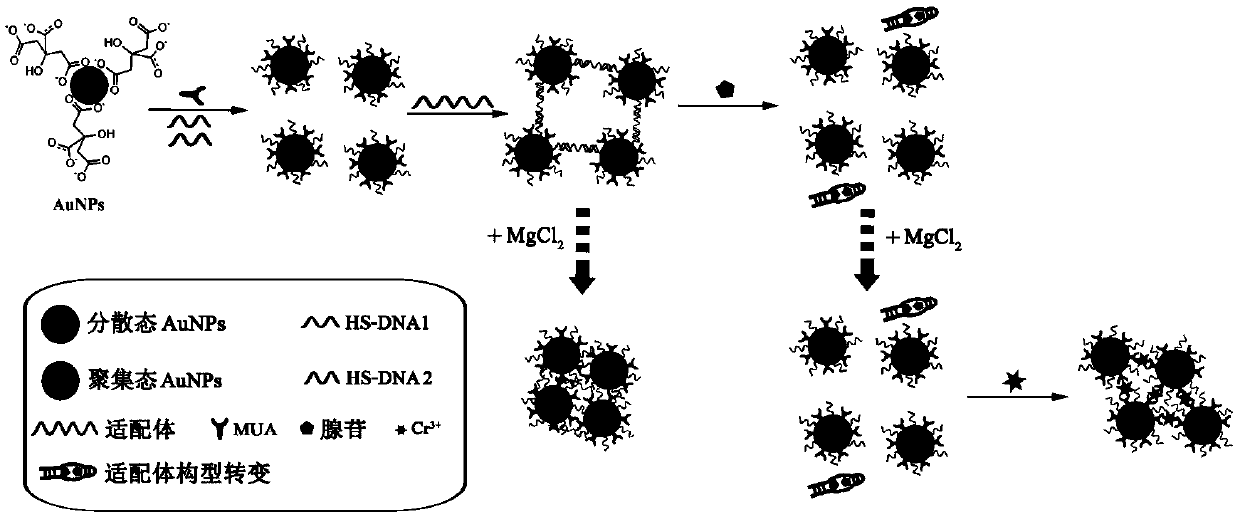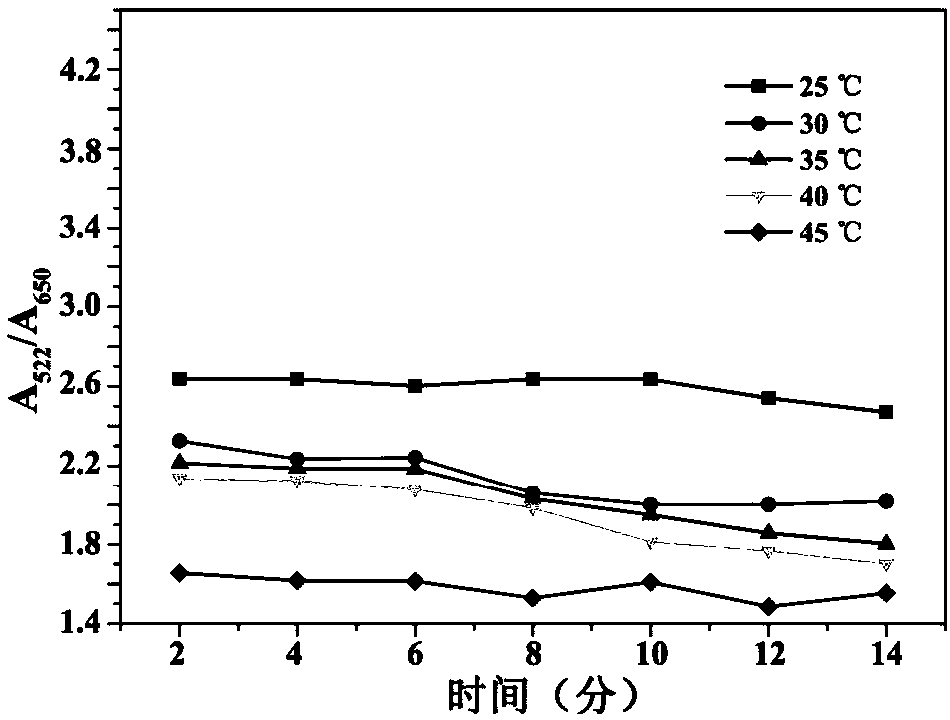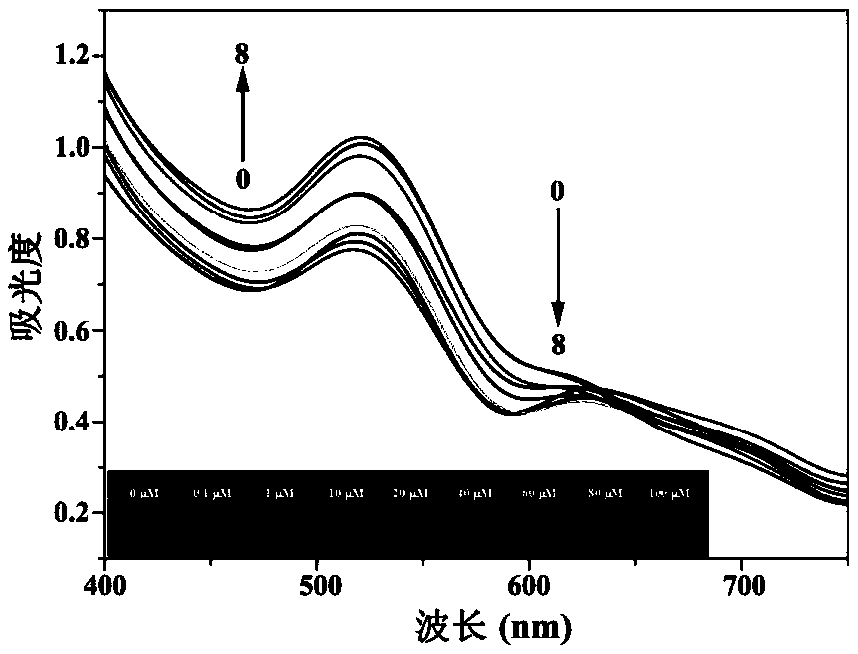Preparation method and application of a visualized gold nanoparticle probe
A technology of gold nanoparticles and probes, which is applied in the field of nanoprobes to achieve the effects of easy operation, good selectivity and rapid detection
- Summary
- Abstract
- Description
- Claims
- Application Information
AI Technical Summary
Problems solved by technology
Method used
Image
Examples
Embodiment 1
[0039] Preparation of gold nanoparticle probes for visualization:
[0040] (1) Add 100mL 1mM chloroauric acid solution into a flask with a reflux device, stir, heat to boiling, then quickly add 10mL 38.8mM sodium citrate solution, and reflux until the solution turns wine red. Remove the flask from the heat source, continue to stir, cool to room temperature, and store at 4°C for later use;
[0041] (2) Mix 100 μM 6.6 μL sulfhydryl DNA1 and DNA2 with TCEP according to the ratio of 1:50, and leave it at room temperature for 1 hour;
[0042] (3) Take 600 μL of the gold nanoparticle solution obtained in step (1) respectively in two glass tubes, add DNA1, DNA2 and 100 μM 6.6 μL MUA obtained in step (2) respectively, and add secondary water to make the final volume of the solution be 1 mL, mix well, and place the solution in the two glass tubes in a dark room for 16 hours;
[0043](4) Add 8.4 μL of 1M Tris-HCl (pH 7.5) buffer solution and 76 μL of 1M NaCl solution to the solutions ...
Embodiment 2
[0050] The impact of incubation time and temperature on the reaction of adenosine and the visualized nanoprobe solution prepared in Example 1:
[0051] Take 500 μL of the visualization nanoprobe solution prepared in Example 1, add 150 μL 0.01M adenosine to it, 2×10 -3 M MgCl 2 , add secondary water to bring the final solution volume to 750 μL. React the solution at 25, 30, 35, 40, and 45°C for 2, 4, 6, 8, 10, 12, and 14 minutes respectively, and detect the UV-Vis absorption spectrum ratio A at different temperatures and at different times 522 / A 650 Impact.
[0052] The UV-Vis absorption spectrum ratio A of the visualized nanoprobe solution at different temperatures and at different times 522 / A 650 See the impact of figure 2 : Under different reaction times, the absorption spectrum ratio A 522 / A 650 All are constants; as the temperature continues to rise, the constant values continue to decrease, indicating that the visualized nanoprobe solution prepared by the pr...
Embodiment 3
[0054] Add different concentrations of adenosine solutions to the visualized nanoprobe solution prepared in Example 1. Experiments on the variation of UV-Vis absorption spectrum with the concentration of adenosine:
[0055] Take 80 μL of the visualized nanoprobe solution prepared in Example 1 in a 0.5 mL centrifuge tube, and add different concentrations of adenosine and 2×10 -3 M MgCl 2 solution, add secondary water to make the final solution volume 120 μL. The changes of the UV-Vis absorption spectrum of the visualized nanoprobe solution were detected under different adenosine concentrations.
[0056] The effect of different concentrations of adenosine solution on the UV-Vis absorption spectrum of the visualized nanoprobe solution is shown in image 3 : Gradually increasing the concentration of adenosine, the absorption peak of the visualized nanoprobe solution at 522nm gradually increases, and the absorption peak at 650nm gradually decreases. It shows that the visualized ...
PUM
 Login to View More
Login to View More Abstract
Description
Claims
Application Information
 Login to View More
Login to View More - R&D
- Intellectual Property
- Life Sciences
- Materials
- Tech Scout
- Unparalleled Data Quality
- Higher Quality Content
- 60% Fewer Hallucinations
Browse by: Latest US Patents, China's latest patents, Technical Efficacy Thesaurus, Application Domain, Technology Topic, Popular Technical Reports.
© 2025 PatSnap. All rights reserved.Legal|Privacy policy|Modern Slavery Act Transparency Statement|Sitemap|About US| Contact US: help@patsnap.com



